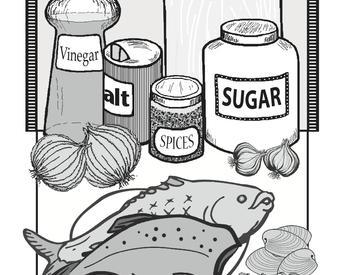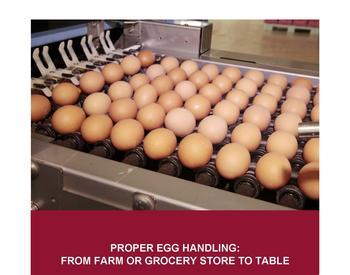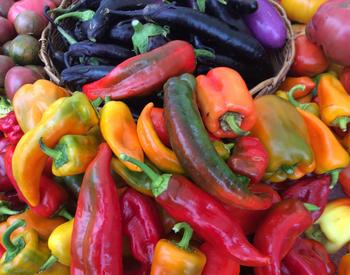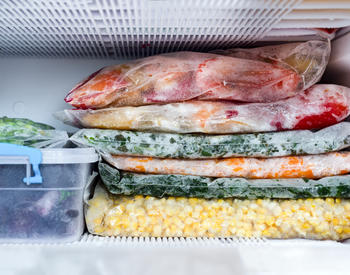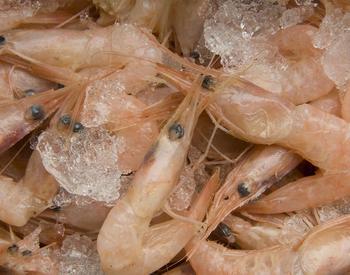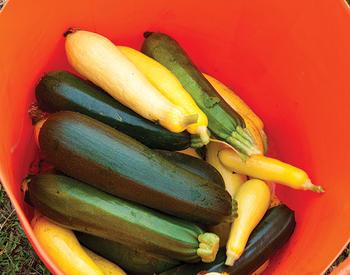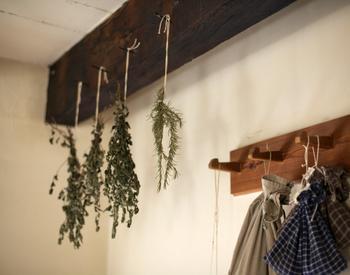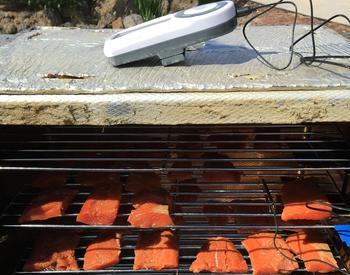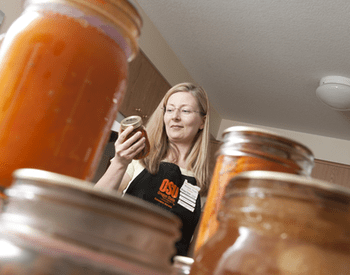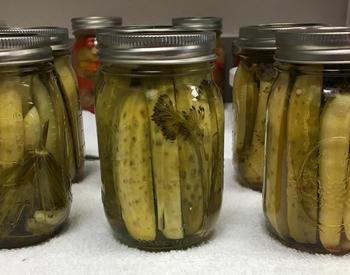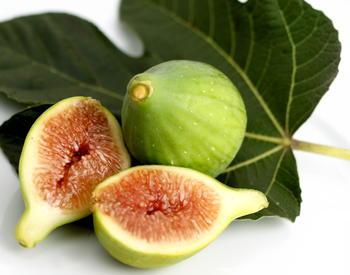Download this publication as a PDF
Canning dried beans
Select mature, dry beans. Sort and discard any discolored seeds and foreign matter. It will take an average of 5 pounds of dried beans for 7 quarts or 3 ¼ pounds for 9 pints.
Preparing the beans
Place dried beans in a large pot and cover with water. Soak 12 to 18 hours in a cool place. Drain water. To quickly hydrate beans, you may cover sorted and washed beans with boiling water in a saucepan. Boil 2 minutes, remove from heat, soak 1 hour and drain.
Cover beans soaked by either method with fresh water and boil 30 minutes. Add ½ teaspoon of salt per pint or 1 teaspoon per quart to the jar, if desired. Fill jars with beans and cooking water, leaving 1-inch headspace.
Adjust lids and process: pints for 75 minutes and quarts for 90 minutes. Process time:
- Dial gauge canner
- Altitude under 2,000 feet: process at 11 pounds.
- Altitude 2,001–4,000 feet: process at 12 pounds.
- Altitude 4,001–6,000 feet: process at 13 pounds.
- Altitude over 6,000 feet: process at 14 pounds.
- Weighted gauge canner
- Altitude under 1,000 feet: process at 10 pounds.
- Altitude over 1,000 feet: process at 15 pounds.
After processing, remove canner from heat and wait until pressure returns to zero. Remove weight or open petcock. Wait 10 minutes. Unfasten the canner lid and remove carefully.
Beans, baked
Follow directions above for selecting, sorting and preparing beans for canning.
Procedure: Soak and boil beans as follows — Sort and wash dry beans. Add 3 cups of water for each cup of dried beans or peas. Boil 2 minutes, remove from heat and soak 1 hour and drain. Heat to boiling in fresh water. Save liquid for making sauce.
Prepare molasses sauce as follows — Mix 4 cups water or cooking liquid from beans, 3 tablespoons dark molasses, 1 tablespoon vinegar, 2 teaspoons salt, and ¾ teaspoon powdered dry mustard. Heat to boiling.
Place seven ¾-inch pieces of pork, ham or bacon in an earthenware crock, a large casserole or a pan. Add beans and enough molasses sauce to cover beans. Cover and bake 4 to 5 hours at 350ºF. Add water as needed — about every hour.
Fill jars, leaving 1 inch head space. Adjust lids and process in a dial pressure canner at 11 pounds or in weighted gauge canner at 10 pounds pressure: pints for 65 minutes and quarts for 75 minutes. Adjust for altitude using table under canning dried beans.
After processing, remove canner from heat and wait until pressure returns to zero. Remove weight or open petcock. Wait 10 minutes. Unfasten the canner lid and remove carefully.
Beans, dry, with tomato or molasses sauce
Follow directions above for selecting, sorting and preparing beans for canning.
Procedure: Sort and wash dry beans. Add 3 cups of water for each cup of dried beans or peas. Boil 2 minutes, remove from heat and soak 1 hour and drain. Heat to boiling in fresh water. Save liquid for making sauce. Make your choice of the following:
- Tomato Sauce — Version 1: Mix 1 quart tomato juice, 3 tablespoons sugar, 2 teaspoons salt, 1 tablespoon chopped onion and 1/4 teaspoon each of ground cloves, allspice, mace and cayenne pepper. Heat to boiling.
- Tomato Sauce — Version 2: Mix 1 cup tomato ketchup with 3 cups of cooking liquid from beans. Heat to boiling.
- Molasses Sauce — Mix 4 cups water or cooking liquid from beans, 3 tablespoons dark molasses, 1 tablespoon vinegar, 2 teaspoons salt and 3/4 teaspoon powdered dry mustard. Heat to boiling. Fill jars three-fourths full with hot beans. Add a 3/4-inch cube of pork, ham or bacon to each jar, if desired.
Fill jars with heated sauce, leaving 1-inch headspace. Adjust lids and process in a dial pressure canner at 11 pounds or in weighted gauge canner at 10 pounds pressure: pints for 65 minutes and quarts for 75 minutes. Adjust for altitude using table under canning dried beans. After processing, remove canner from heat and wait until pressure returns to zero. Remove weight or open petcock. Wait 10 minutes. Unfasten the canner lid and remove carefully.
Bean Soup
- 2 cups dried navy beans (about 1 pound)
- 1 ham hock or ¼ pound salt pork
- ½ cup chopped onion
- ½ cup grated carrot
- ½ hot red pepper, finely chopped (optional)
Put beans in a large sauce pot; add water to 2 inches over the beans. Bring beans to a boil. Simmer 2 minutes. Remove from heat and let soak for 1 hour. Drain. Cover beans with 2 inches of fresh water. Add meat, onion, carrot and pepper, and bring to a boil. Cover and simmer for 2 hours or until the beans are just tender. Remove ham hock. Cut meat from bone and cut into small pieces. Return meat to soup.
Fill hot jars half full with solid mixture. Add remaining liquid leaving 1-inch head space. Adjust lids, and process in a pressure canner (dial gauge canner 11 pounds pressure OR weighted gauge canner 10 pounds pressure: pints for 75 minutes and quarts for 90 minutes. Adjust for altitude using table under canning dried beans.
After processing, remove canner from heat and wait until pressure returns to zero. Remove weight or open petcock. Wait 10 minutes. Unfasten the canner lid and remove carefully.
Source: Ball Blue Book
2013 Oregon State University. OSU Extension Service cooperating. OSU Extension Service offers educational programs, activities, and materials without discrimination based on race, color, religion, sex, sexual orientation, national origin, age, marital status, disability, or disabled veteran or Vietnam-era veteran status. OSU Extension Service is an Equal Opportunity Employer.

